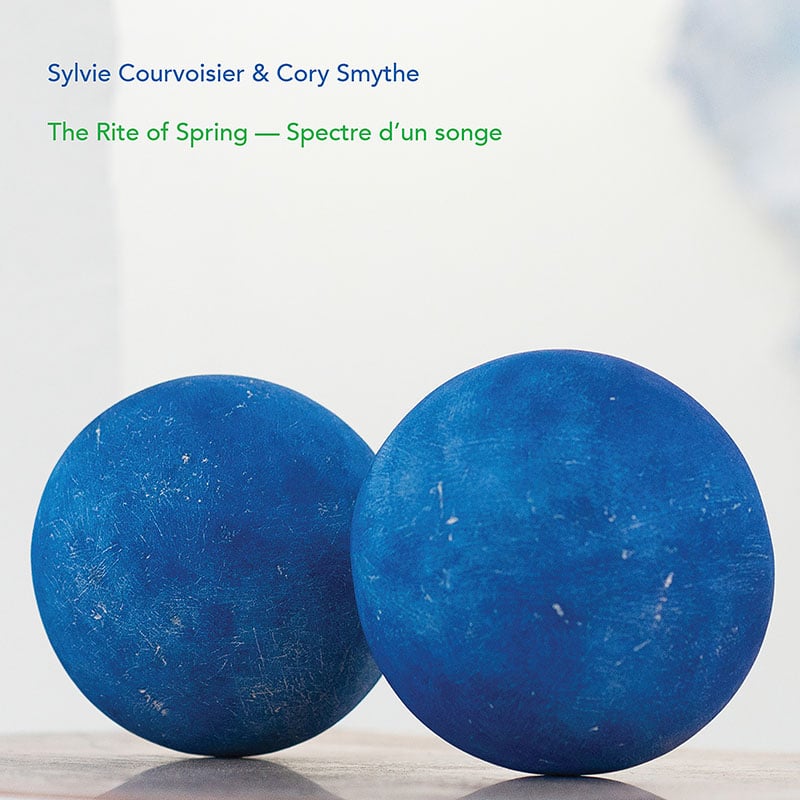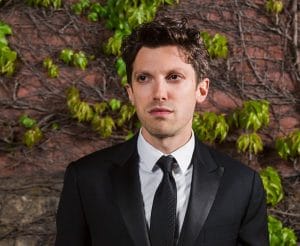Sylvie Courvoisier / Cory Smythe: The Rite Of Spring: Spectre D’un Songe
Two daring jazz improvisers take on a cherished hundred-year-old classical ballet masterpiece with radical roots on The Rite of Spring: Spectre d’un songe. Igor Stravinsky was fresh off the success of his 1911 “Petrushka,” which radiated with the artistic atmosphere of his Russia, when in 1913 he premiered “The Rite of Spring” at the opening of the Théâtre des Champs-Elysées. The audience was divided into the Parisian elite in the boxes and the “bohemian” aesthetes scattered about the theater. Stravinsky’s music contradicted every norm of the time; originality equaled shock. Vaslav Nijinsky, already controversial, was the choreographer. The dancers performed as if robots, in a ritual that concluded with the portrayal of the human sacrifice of a dancer. Urban legend has the audience factions screaming praise, or insults, at the performers, and physically pummeling each other in a near riot. The composition has been elevated considerably, but the music remains complex and sometimes uncomfortable. It is a fitting vehicle for the singular talents of pianists Sylvie Courvoisier and Cory Smythe. The piano duo brings us a fascinating interpretation of Stravinsky’s magnum opus followed by a Courvoisier composition.
Courvoisier approached Stravinsky’s work as a potential project in the past but the Russian composer’s family was not open to an improvised arrangement of his composition. Time has changed that. Smythe is known for his improvised music as a leader, two recordings with Ingrid Laubrock and as a member of Tyshawn Sorey’s Trio. His classical associations include work with the International Contemporary Ensemble, and the Lincoln Center’s Mostly Mozart festival. Smythe and violin virtuoso Hilary Hahn earned a Grammy award for their duo album In 27 Pieces: the Hilary Hahn Encores (Deutsche Grammophon, 2013).
In the first of two original ballet movements, “Le Sacre du Printemps, Pt.1,” Stravinsky’s personal notes describe a people divided into two groups in opposition to each other, beginning a “ritual of the rival tribes.” Courvoisier and Smythe take a nuanced approach, both to their improvising and their interactions. The tension, while in plain sight, is open to a give-and-take as both pianists shift their positions amid structure and invention. “Le Sacre du Printemps, Pt.2,” was considered so difficult for the orchestra to play, that musicians would break out in nervous laughter during Stravinsky’s rehearsals. Without sacrificing the spirit of the original or their own resourcefulness, Courvoisier and Smythe deftly navigate the unrelenting rhythms, and episodes of mysteriously verbalized, and vehement intonations. Courvoisier’s “Spectre d’un songe” (Ghost of a dream) is a half-hour paean that complements Stravinsky’s work seamlessly, feeling like an undiscovered third movement.
Parts of Stravinsky’s score for “The Rite of Spring” have been incorporated in the recordings of Ornette Coleman, Charlie Parker, The Bad Plus, and other jazz artists. The best-known interpretation was that of Hubert Laws. Despite an all-star ensemble including Ron Carter, and Jack DeJohnette, that recording lacks any visceral sensation. It is that challenge that Courvoisier and Smythe meet and surpass in every moment of this excellent recording.



